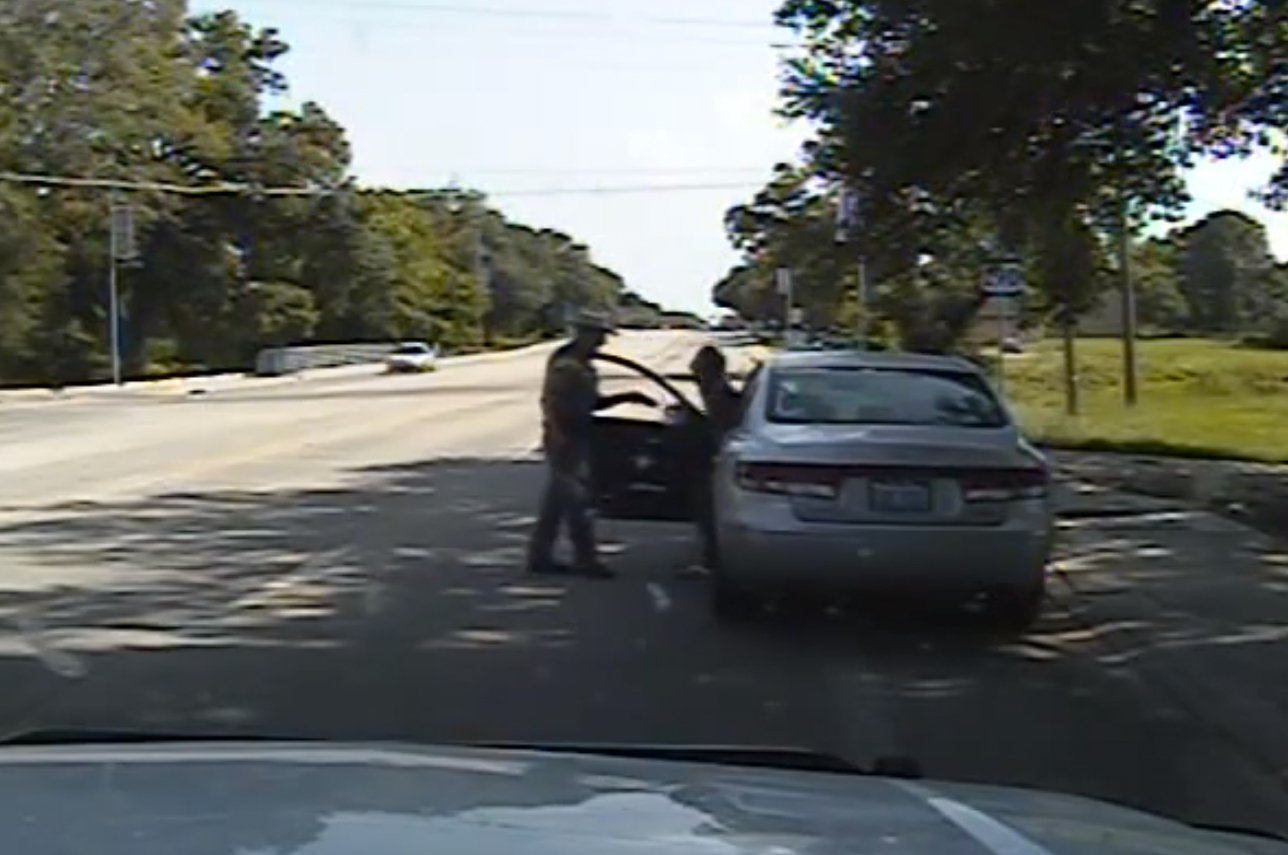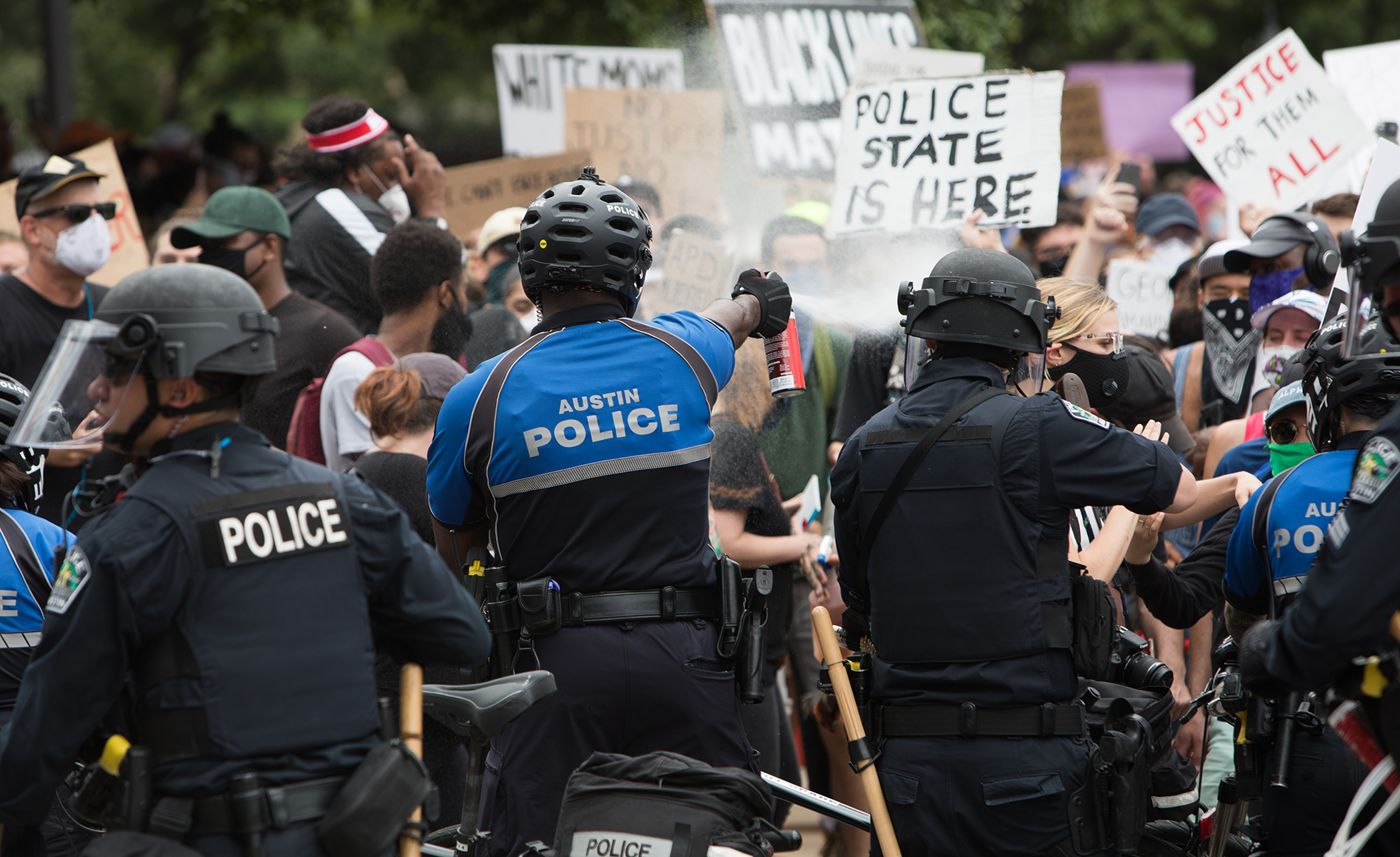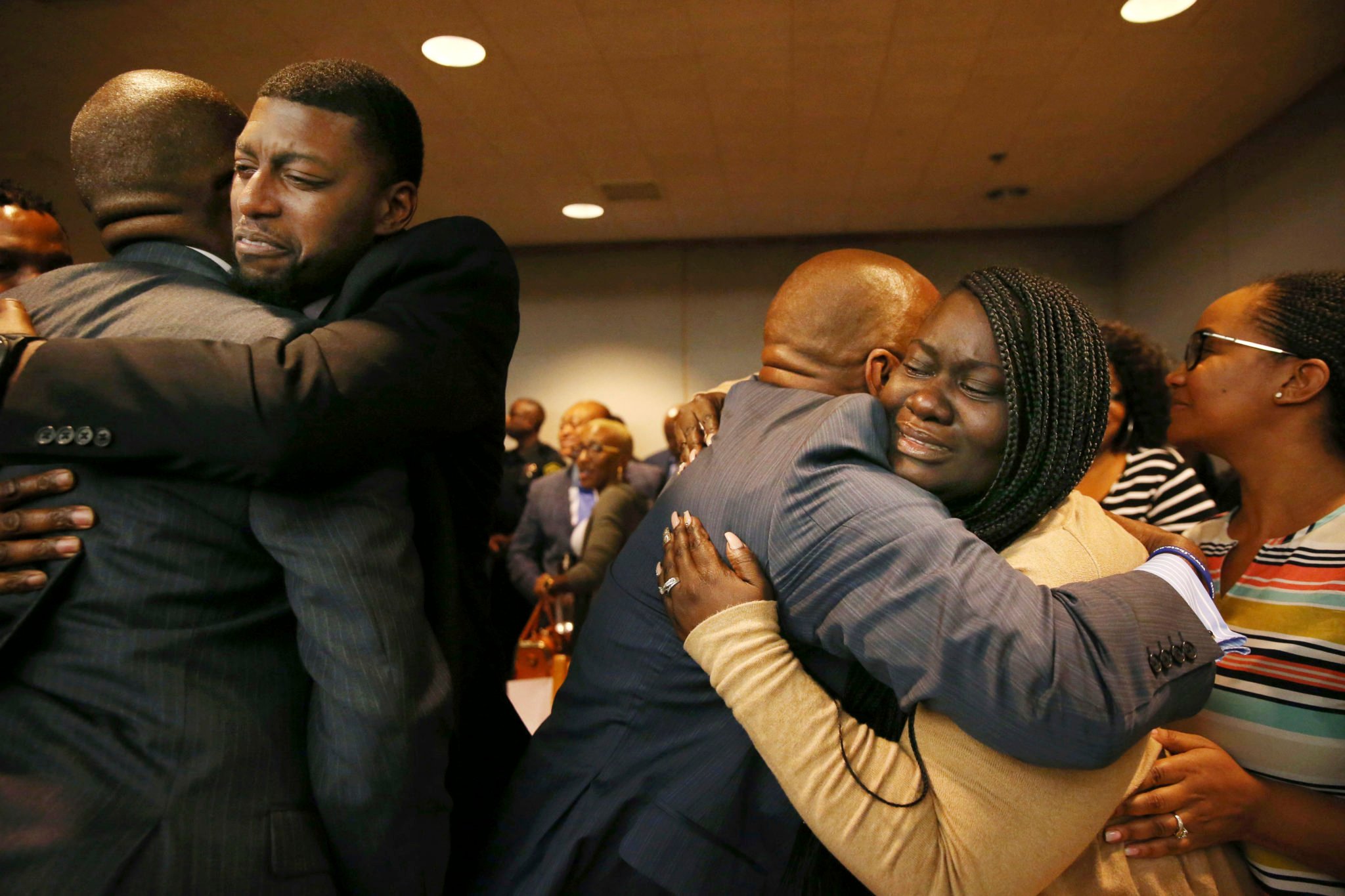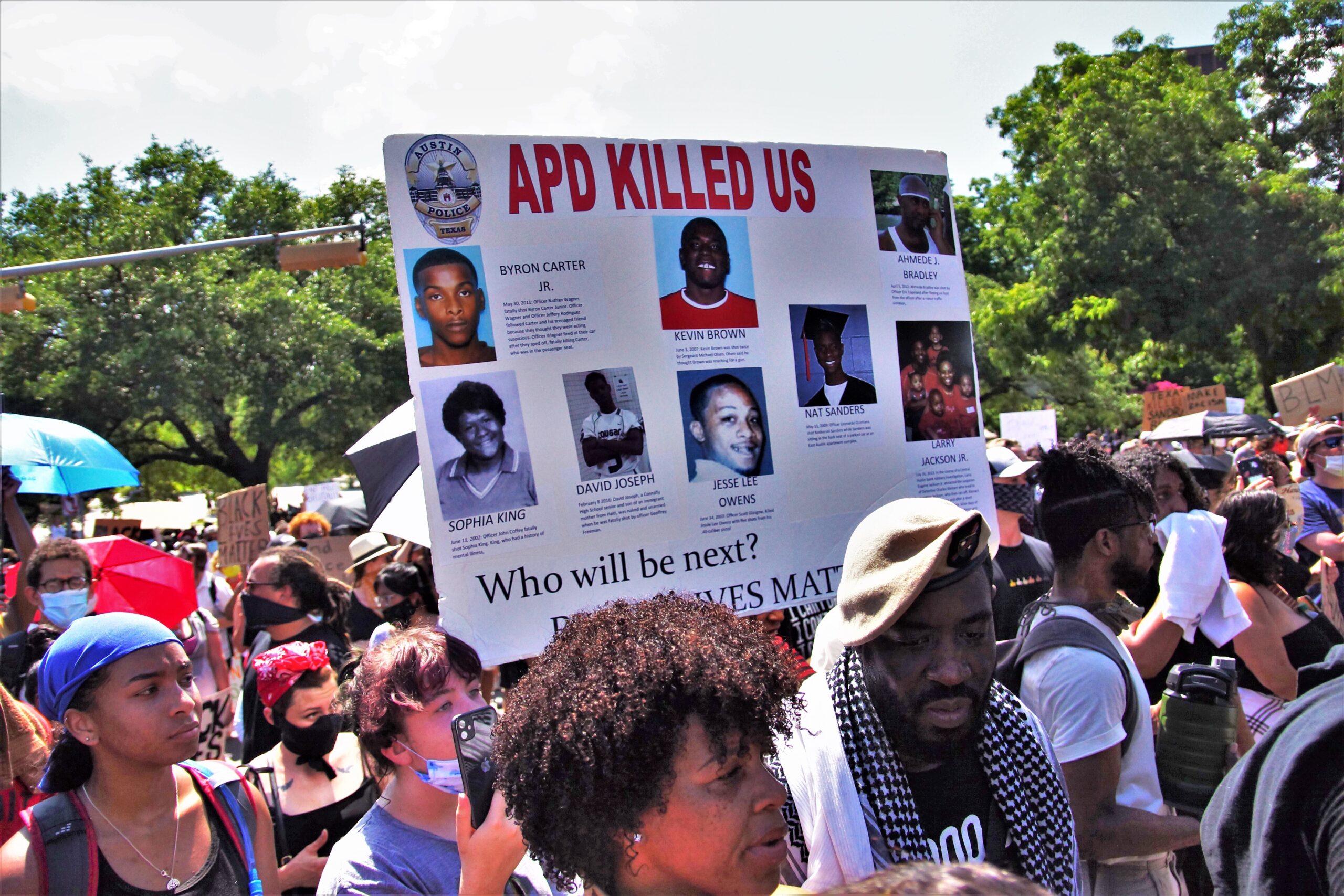
Mistrial: Austin Police Officer’s Landmark Murder Trial Gets No Resolution
A grand jury indicted Christopher Taylor after the 2020 shooting of Michael Ramos in South Austin. He is believed to be the first Austin officer ever prosecuted for murder after an on-duty killing.
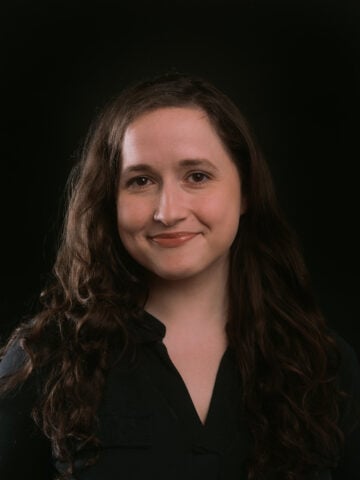
A Travis County jury was unable to reach a verdict after days of deliberation in the trial of Christopher Taylor, an Austin Police Officer charged with murder after the 2020 on-duty shooting of Michael Ramos. On Wednesday, the judge declared a mistrial.
Taylor was indicted and charged with murder in March 2021 in connection with the death of Ramos, a 42-year-old Hispanic and Black man who was unarmed at the time he was killed. This is one of almost 40 criminal cases brought against law enforcement officials for on-duty incidents since Travis County District Attorney Jose Garza took office in January 2021, according to data gathered from public reports issued by the office’s Civil Rights Unit. Garza ran on a platform of holding police officers accountable for misconduct.
Several of the cases include more than one criminal charge. At least seven cases have been disposed of—either dismissed or reindicted—and roughly half of all of the cases stem from uses of force during the 2020 protests against police brutality.
Since Garza took office, he has brought five murder or manslaughter charges against Austin-area law enforcement officials, including two against Taylor. He was also indicted in connection with the 2019 shooting of Mauris DeSilva, who was killed by officers while experiencing a mental health crisis, during which he held a knife.
Most of the other indicted officers have court appearances in the next few months. Many experts were watching Taylor’s trial for a crucial, though certainly not prescient, look into how these cases might turn out. But with the declaration of a mistrial, observers have no more insight into the future for criminal prosecutions for officers in Austin.
The lack of a resolution in Taylor’s trial is a setback for the DA’s office, whose policy dictates that every case in which an on-duty officer is accused of causing death or serious bodily injury with a firearm be put before a grand jury. The office’s strategy—which resulted in more cases presented to grand juries than during Garza’s predecessor’s term—drew criticisms of “political prosecution”, and Garza’s opponents haven’t pulled punches. In September, shortly after Garza announced his bid for reelection, a handful of conservative groups created a website to track his every move.
Garza told the Texas Observer that the office’s policy of what to present to a grand jury is “relatively narrow and very specific.”
In the courtroom on the eighth floor of the Travis County Criminal Court, the politics of police prosecutions were on display in the state’s case against Taylor, as well as in his own defense.
Taylor initially faced trial in May, but a slew of incidents—including the courtroom being closed to reporters during the first day of jury selection and fliers being placed on potential jurors’ cars—led 167th District Judge Dayna Blazey to declare a mistrial.
The current trial began October 23, and for nearly two weeks jurors listened to a revolving door of witnesses: officers who were on the scene when Taylor shot Ramos; a psychologist; engineering experts; and the state’s star witness, an expert on police practices who testified at trial against Derek Chauvin, the officer who killed George Floyd. (With the jury out of earshot, the defense unsuccessfully tried to get the judge to bar any mention of the names George Floyd or Derrick Chauvin from the proceedings.) Jurors even went to the site of the shooting on the day of closing arguments.
Across the United States, law enforcement officers have long avoided criminal consequences for on-duty shootings. Until recently, Texas officers were no exception.
On Tuesday, October 24, jurors looked up at the courtroom’s TV screens as lawyers for the State of Texas displayed a computer-generated recreation of the last moments of Michael Ramos’ life from Christopher Taylor’s vantage point.
On April 24, 2020, officers responded to a 911 call about a man and a woman sitting in a Toyota Prius at the Rosemont at Oak Valley apartments in South Austin, apparently doing drugs. One caller told dispatchers that the man was holding a gun—a statement she later told the jury was untrue. She had heard others at the apartment claim they had seen him with a gun.
“If I could take anything back, I would take that back,” the caller, Nicole Scott, said on the stand. “I never saw that man with a gun.”
“If I could take anything back, I would take that back. I never saw [Michael Ramos] with a gun.”—911 caller Nicole Scott
Officers arrived and blocked the exit to the parking lot with their cars. Ramos got out of the Prius with his hands up. Officers, guns drawn, shouted at him to comply while he shouted questions back. At one point, an officer fired a less-lethal round at Ramos, who fell into the driver’s seat of the car after being hit. He then began to drive slowly, veering the car to the right, away from officers. Taylor fired his rifle three times at the car. The second bullet struck Ramos in the head, killing him, according to an expert witness at the trial.
At the time, footage of the incident went viral, and the city erupted in widespread protests against police brutality, which were further fueled by the murder of George Floyd just a month later in Minneapolis.
Closing arguments in Taylor’s trial put a fine point on the two sides of the debate surrounding criminal police accountability. The defense argued that a conviction for Taylor could have a chilling effect on police in Austin, making them less proactive in the field. Defense Attorney Doug O’Connell told jurors the shooting of Michael Ramos “may be a tragedy … but it’s sure not murder.”
“This case is about one thing and one thing only: whether Chris’s perception of the threat was reasonable,” he said during his closing argument November 7.
Travis County District Attorney Jose Garza’s detractors have made much of his policy to send these use-of-force cases to grand juries. And it’s true that a high number of officer indictments have come down during his term. But in order to understand what these indictments mean, one must look at the context in which they’re happening—and what officers are actually being charged with.
According to data collected by researchers at Bowling Green State University, at least 24 Texas officers—including Taylor—were arrested on charges of murder or manslaughter since 2005, but only a small portion of those incidents occurred on duty.
In Travis County, at least seven law enforcement officers have been arrested for murder or manslaughter since 2005, including those arrested for off-duty crimes. Travis County officers have amassed at least eight charges stemming from on-duty killings in that time.
In 2014, former Austin Police Department Detective Charles Kleinert was charged with manslaughter after the on-duty shooting of Larry Jackson Jr. A U.S. District Judge dismissed the charges the following year. Former Williamson County Sheriff’s Deputies James Johnson and Zachary Camden were each indicted on charges of manslaughter after Javier Ambler died in custody in March 2019. Austin Police Officer Karl Krycia was charged with murder and deadly conduct (discharge of a firearm) in connection with the 2019 shooting of Mauris DeSilva. Christopher Taylor faces those same two charges in connection with DeSilva’s death.
Two other officers were arrested for murder in off-duty domestic violence incidents: former Austin Police Officer VonTrey Clark in 2015 and former Travis County Sheriff’s Deputy Stephen Broderick in 2021.
During Garza’s tenure, officer cases like these get put before a grand jury, a secret process during which the state presents its evidence, and members of the public must decide if there is enough evidence to bring them to trial. Some have criticized Garza’s policy of relying on black-box proceedings, but here’s the rub: In Texas, you need a grand jury proceeding to bring felony charges. Other states allow preliminary hearings—public proceedings to determine whether to move forward—but those aren’t an option in Texas.
“The choice is limited to: Go to the grand jury, or don’t charge,” said Jennifer Laurin, UT Law Professor. And if charges are rare, convictions are even less common.
There are several explanations—some legal, some cultural—for why officer convictions are so improbable in Texas. While officers have some protections when using force during an arrest, they often rely on the same justification everyone in Texas is entitled to: self-defense.
“Sometimes these claims of self-defense will be well justified; sometimes they won’t be,” Laurin said. “Sometimes the facts are going to be clear at the outset, and sometimes they won’t be. But that is a very, very common legal reason why prosecutors will initially decline to charge or reason why juries may acquit.”
She added that officers, either testifying in their own defense or in defense of their colleagues, are often perceived by jurors as having a “presumptive aura of credibility.”
“Conventionally, the thought has been that police departments do enjoy a presumption of credibility and trust,” Laurin said. “It’s the defendant’s to lose, not build in those cases.”
Another obstacle to prosecuting officers: They’re being investigated by their own coworkers. In Taylor’s case, prosecutors pointed out that his uncle, Scott Askew, was a senior officer in the department’s Special Investigations Unit when Ramos’ killing was being investigated. Although the department said Askew was not involved in the investigation, he continued to supervise the unit. (Blazey didn’t allow jurors to learn about Taylor’s uncle’s role in the Special Investigations Unit.)
The Austin Police Association did not respond to requests for comment.

